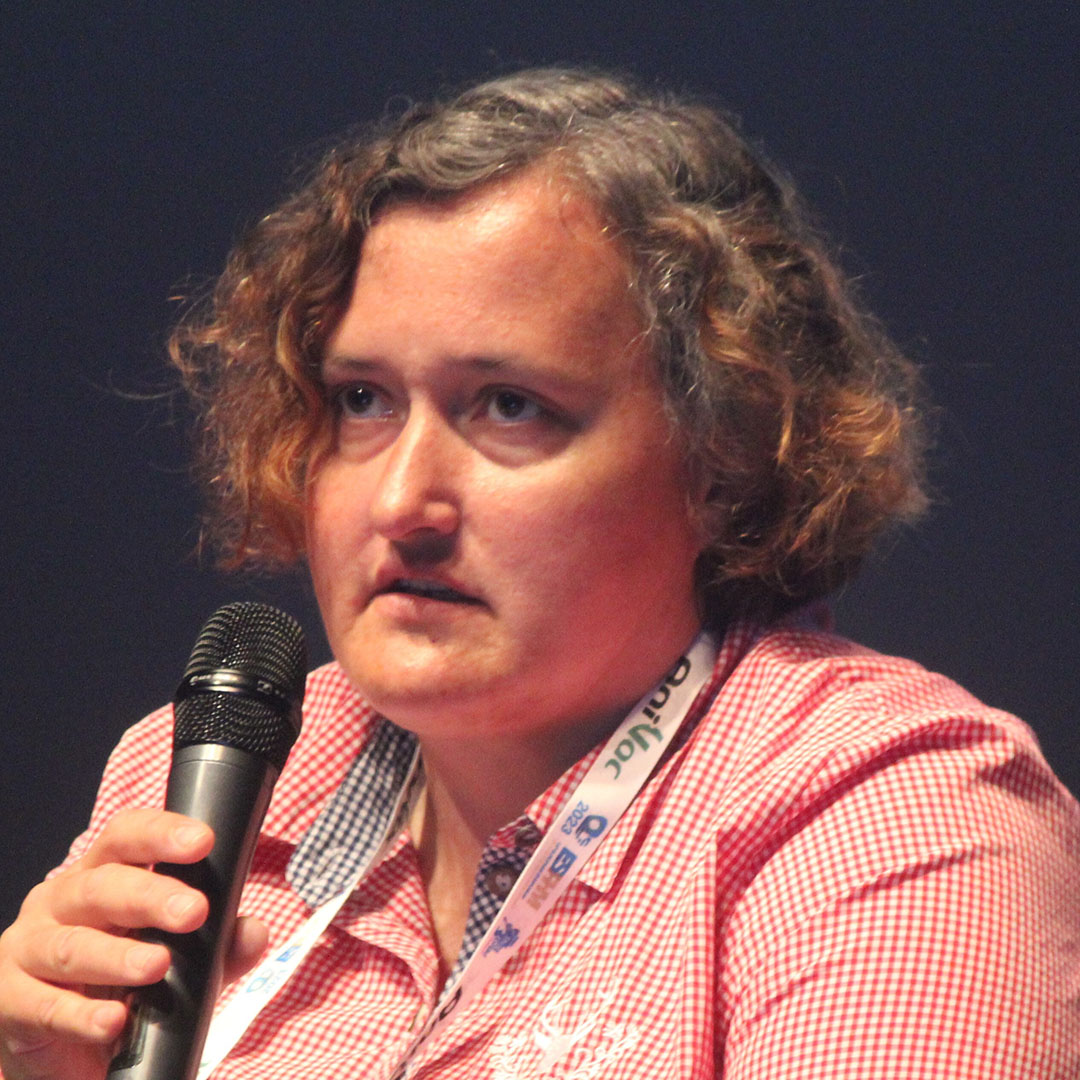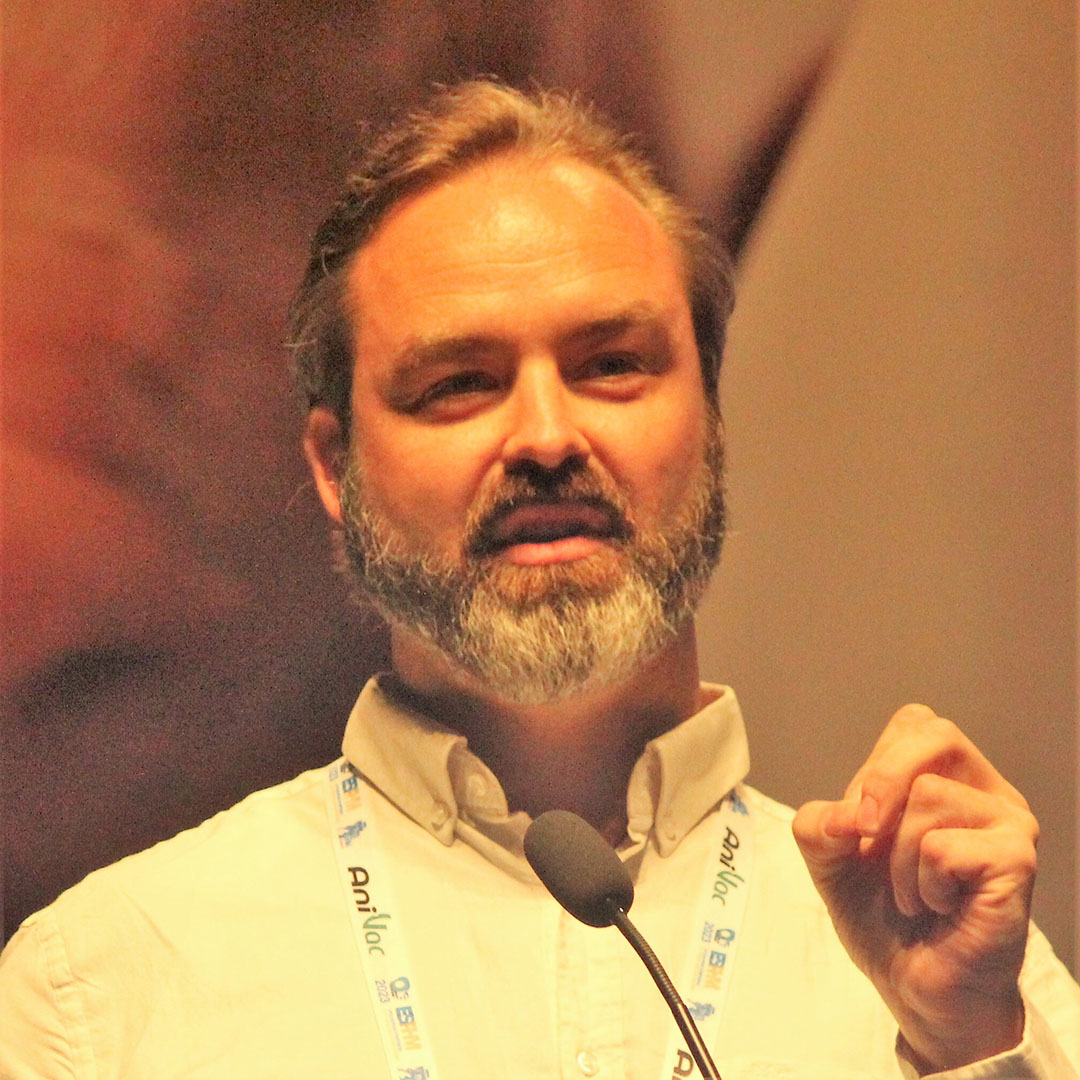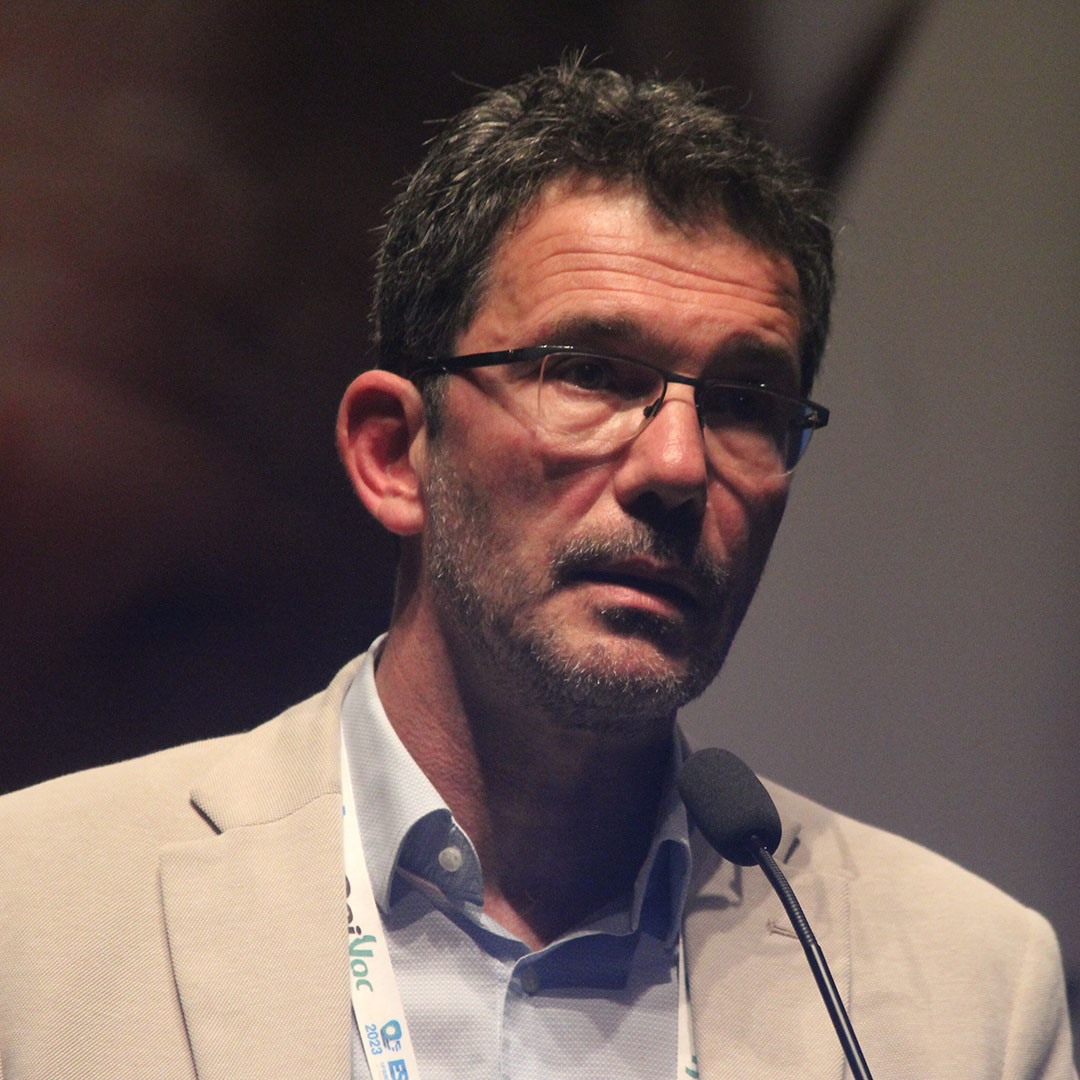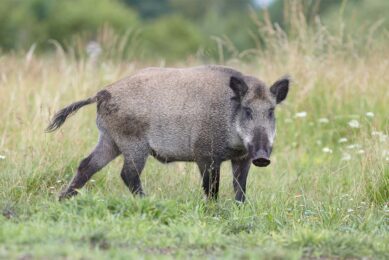Great diversity of views at ESPHM 2023

The 14th edition of the European Symposium for Porcine Health Management (ESPHM), held on May 31 until June 2, 2023, addressed more topics than just pig veterinary problems. Apart from keynote lectures on ASF and PCV2, speakers told the audience in Thessaloniki about sustainable nutrition, PLF and developments in boar semen quality prediction.

Making finisher feed more sustainable
The main focus of the keynote lecture of Prof Ilias Kyriazakis, attached to Queen’s University in Belfast, UK, was the environmental impact of pig systems. He quoted a recent report by the Centre for Innovation Excellence in Livestock (CIEL, 2022) which said that in the UK, the carbon footprint of swine production is mostly caused by feed-related (68%) and manure-associated activities (22%). Within the feed-related activities, he said, the finisher phase is known to the major contributor – and he aimed to explore the causes and opportunities a bit deeper. Dr Kyriazakis quoted CIEL once more pointing to soy production being at the heart of this – so alternative protein sources would be worth considering. He summed up:
Home-grown protein sources, for instance rapeseed meal, lupins, faba beans, peas or macro algae;· Genetically modified and engineered protein crops;
Proteins from animal sources, such as ruminants or insect meals;
Protein sources derived from cellular agriculture, like microbial and single-cell proteins; and
Alternative protein sources arising from circular streams, such as former foods, food waste and industry by-products or waste streams.
He closed off with discussing various bottlenecks that impede a rapid introduction of those alternative sources, and how these might be overcome.

Where biosecurity meets psychology
Dr Jean-Pierre Vaillancourt, attached to the Université de Montréal, Canada, is always good for interesting insights and a light-hearted tone of voice, which makes his contributions stand out in a pleasant manner. The theme of his presentation was “Risk analysis and risk mitigation: How do we deal beyond biosecurity?” Key in his presentation was that a biosecurity handbook is of no use if farm staff compliance is absent. His presentation therefore had a psychological side to it, as the question is how to increase compliance?
Part of this could be related to a difficulty to comply because of lack of time or other constraints; another could be a matter of beliefs, education or personality traits. He reserved the last category for inadequate training, audits or incentives. Dr Vaillancourt compared various methods of how biosecurity compliance could be improved. For instance by using surveys, audits, cameras or sensors. He also discussed pros and cons of each method. Both the cameras and the sensors received many positive results, he said, explaining how sensors can be used to detect chipped boots on pressure mats. He added that a reward for good compliance will motivate employees.
Dr Vaillancourt closed off by sharing examples of geofencing (Farm Health Guardian). This is a method to record movement on a larger scale using many data. This enables rapid contact tracing in the event of an outbreak, and it also enables recording movements on and off the farm.

Overview of the ASF situation
Dr Sandra Blome, researcher at the Friedrich-Loeffler-Institut in Germany, talked about African Swine Fever (ASF). She summed up the ASF situation throughout the world, in terms of spread as well as measures to control the virus. She pointed out that the virus has a moderate contagiosity, hence basic biosecurity is key, as these tools work best on industrialised farms. She pointed out that there were almost no secondary outbreaks within the EU on industrialised farms.
Vaccines will not replace the need for biosecurity, behaviour changes, improved management, diagnostic approaches and culling measures
She discussed how “point infections” have been dealt with, i.e. in wild boar populations where just one animal initially got infected and from where the spread went gradually in all directions. This is easier to control than the situation in Germany, where the virus is present in wild boar populations across the border in Poland.
She also discussed the pros and cons of various optional vaccines against ASF virus, such as inactivated vaccines, naturally attenuated strains, vector/ subunit/ DNA vaccines, and gene-deleted live vaccines.
All in all, she concluded, “Vaccines will not replace the need for biosecurity, behaviour changes, improved management, diagnostic approaches and culling measures.”

Success factors for PLF models
Precision Livestock Farming (PLF) was key at the presentation of Dr Tomas Norton, professor at Leuven University in Belgium. PLF is known for using sensors and subsequent algorithms for early monitoring of problems or trends in a pig house, allowing swift action. Key production indicators could be for instance eating and drinking behaviour, breathing rate, laying, motion and social behaviour. As a result, the technology yields a “large volume of data,” he explained. Interestingly, he shared data of a piece of research comparing a camera to a microphone, wondering which tool of the 2 would work best when doing remote sensing of an animal. “The camera being able to monitor on an individual animal level is a major advantage,” he said.
He discussed the latest developments with regard to pig weighing cameras, and also shared insights in the development of pig cough monitoring (SoundTalks, promoted by Boehringer Ingelheim Animal Health). He also summed up a couple of interesting fields of research which are currently still being investigated, for instance multi-pig tracking without the need of an ear tag; a tail biting tool; respiration rate monitoring as well as heart rate monitoring. All in all, he said, PLF is about more than technology, but also includes the willingness of stakeholders to take up the solution, and business models should be clear.

Innovating boar semen production
A lecturer at the Aristotle University of Thessaloniki, Greece, Prof Ioannis Tsakmakidis zoomed in on innovating boar semen production capacity by biomedical technology. Any accurate prediction of boar fertilising capacity, he said, should support the outcome of artificial insemination (AI). He summed up 3 categories for boar fertility assessment.
Lab semen evaluation is the normal approach to predict boar fertility, Prof Tsakmakidis said. The current trend is to apply and combine the results of as many multiple lab tests as possible, which enhances diagnostic value. He summed up various methods, commenting that protocols need to be standardised to make them comparative between different labs.
Biomarkers, genetic background and molecular techniques: Prof Tsakmakidis then zoomed in to molecular factors on regulation of reproduction by the development of “-omics” technologies. Many studies are carried out, he said, to identify human and animal sperm and seminal plasma proteins, which can be used as potential biomarkers of sperm fertilising ability.
Last but not least, he touched on new approaches, and zoomed in on biomedical techniques – as he described it himself “the applications of biological and physiological principles in clinical practice.” Biomedicine, he said, could assist the effort of sperm capacity prediction in consideration with factors which affect the condition of a boar.

Future threats regarding antimicrobial resistance
“Future threats regarding resistance beyond AMR” – that was the title of the keynote lecture by professor Uwe Röseler, Free University of Berlin in Germany. He described resistance against anti-infectives being one of the biggest problems for the health of livestock and humans. In this context, he said, antibiotic resistance is receiving the most attention. In pigs, that applies to both important pig-specific pathogens and zoonotic pathogens, such as salmonellae. In addition, he said, commensal skin, mucosa and gut colonisers can carry a variety of antibiotic resistances and become a problem for immunocompromised animals and humans. He named examples as methicillin-resistant Staphylococcus aureus (MRSA), as well as ESBL-forming or colistin-resistant enterobacteria.
Other resistance phenomena are also playing an increasing role, he added. Increasingly in the focus of antibiotic resistance research are phenotypic adaptation processes or persistent cell formation, he said. He also mentioned numerous reports of resistance to other groups of antimicrobial agents. Disinfectants and antiseptics are the first to be listed here, but also resistance to certain herbicides. Finally, antiparasitic agents also trigger micro-evolutionary adaptation processes and thus induce resistances, he said. Even against vaccines, pathogens have now found ways to effectively evade the specific vaccination response.

Evolution of PCV2
Professor Hans Nauwynck, attached to Ghent University in Belgium, zoomed in on the genetical change over time of Porcine Circovirus 2 (PCV2). He delved into the roles of the virus as well as the host with regard to that evolution.
PCV2 has been around since the late 1960s, he said, but only started creating problems since the 1990s. He pointed out that among the virus’ most susceptible target cells are the lymphoblasts in postnatal pigs. When piglets receive an immunostimulation, e.g. with vaccination, this encourages the forming of lymphoblasts and thus indirectly PCV2 replication is promoted. He said, “The current pig husbandry with an increasing circulation of pathogens and mass vaccination programmes are in favour of PCV2 replication and evolution.”
That has not always been the case, he said. “Originally, PCV2 was not very fit to replicate in lymphoblasts. This changed at the end of the 1990s. It is very well possible that this is associated with the emergence of PRRSv all over the world, resulting in a generally suppressed immunity and a general higher pathogen load and circulation in pigs.”
He also spent attention to the question why Piétrain pigs are less susceptible for PCVAD than Landrace pigs. Recent in vitro trials showed that lymphoblasts of Piétrain pigs are very resistant to infection compared to lymphoblasts of Landrace pigs, he said. One of his conclusions therefore was that efforts should be made to select more resistant breeds.
 Beheer
Beheer








 WP Admin
WP Admin  Bewerk bericht
Bewerk bericht